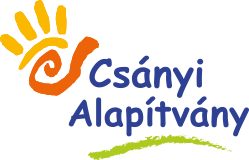
Researchers’ Night in Pécs
This year, once again, we participated in Researchers’ Night with the Csányi Foundation’s Pécs Group 1 and Group 3. This time, we selected programs from the Faculty of Engineering and Information Technology at the University of Pécs. Several program elements aligned with our annual project theme, providing us—Foundation students—and our interested family members with inspiring new ideas. Throughout the evening, we attended numerous exciting demonstrations where we could observe and even try out various innovations.
We gained insight into the 3D printing process and examined the finished products up close. We learned how a functioning device comes together from scratch and how many small components and ideas form an exciting, working system. We also met the engineers behind these creations and experienced the variety and excitement of engineering work firsthand.
Among the projects presented were:
-
Drones: development and testing in the air
-
Meteorological balloon measurement devices: high-altitude data collection and experiments
-
Intelligent chessboard: playing against artificial intelligence
-
Automatic irrigation system: sensors, AI, and gardening
The organizers aimed to show that engineering work is both creative and precise, and that no project can succeed without genuine teamwork.
We also participated in interactive, playful engineering workshops. For example, we explored building materials, learned why load-bearing properties matter, and saw how critical thoughtful design and shaping are.
We had the opportunity to measure noise and vibrations on site. Through fun games, we learned the basics of sound and vibration measurement. Using portable handheld instruments as well as precise equipment, we could measure, for instance, how loud a sound we could make with our voice or the vibration caused by stomping. Written certificates of the results were provided. Soap bubbles were also used to model tent structures.
At another station, we tested our sense of smell: blindfolded, we sniffed different materials and tried to identify them. The samples were everyday items such as spices, fruits, salt, and sugar.
At the BIM Skills Lab research group stand, we learned how buildings are designed using cutting-edge 3D technologies and BIM methodology. We experienced walking through a building that only exists on the design table and felt what it might be like for a construction worker working atop a skyscraper.
Finally, at the Environmental Engineering Department’s research pilot site, we explored nature-based wastewater treatment possibilities. We measured water quality parameters—such as pH, conductivity, chemical oxygen demand, and ions—to assess treatment efficiency.
It was a fantastic evening to be part of.
Andrea Bálint-Orsós and Luca Borsy, mentors


